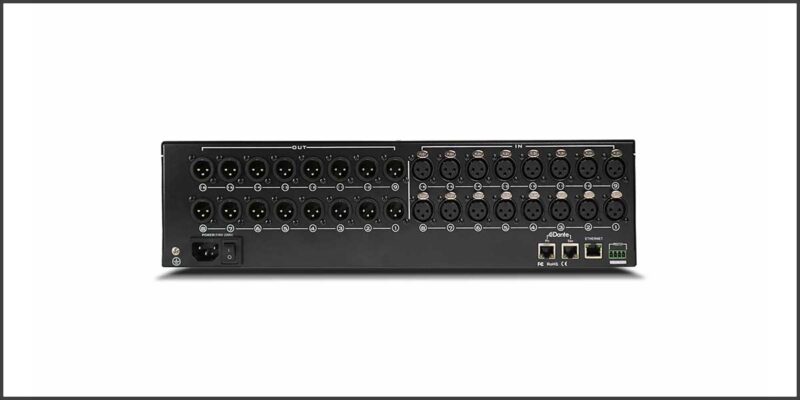Leonard’s InfoComm Minute Day the First — on Standards

A decade ago internet cartoonist Randall Munroe made a joke about the proliferation of standards, in which an attempt to create a single unifying standard to replace 14 competing standards instead exacerbated the problem by creating a 15th competing standard. Everyone who creates a standard has a vision for why they are doing so, for what problem it solves, for how it fits into the larger world. Nowhere does this appear more true than in the world of AV-over-IP, which has become a maze of walled gardens. This morning I met not one, but two groups attempting to create unity via different paths. The groups are the Alliance for IP Media Solutions, or AIMS and Audinate.
This is today’s InfoComm minute.
The standard created by AIMS is called IPMX, for IP Media Experience. Unlike the Dante solution, this is a true standard based on protocols and standards from SMPTE (IPMX heavily leans on SMPTE 2110), AES, and others. IPMX itself is best described as a container for various formats of video, which can be sent via different profiles. There are currently two which have been developed: one for uncompressed SMPTE 2110 video and one for compressed video via JPEG-XS. Other profiles including H.264, HEVC, and NDI are on the roadmap. The positive thing about a standard is that any manufacturer’s equipment or software can interoperate. You could theoretically use one vendor’s networked camera, another’s recorder and a third’s encode/decode endpoints. This solves one of the biggest issues with walled gardens — that you only have access to the gear in one manufacturer’s catalog. Control is standardized as well, via AMWA’s NMOS (network media open specifications).
A fun thing about the AIMS booth is that it has a list of over a score of vendors with IPMX-related solutions, from newcomer PlexusAV to established firms including Nanolumens, Barco, Matrox and EvertzAV. One can spend plenty of time on the show floor exploring these solutions and how they fit.
Dante, on the other hand, is one of those “de facto standards” which is actually a proprietary product. (We’ll leave the actual AES67 standard as a discussion for another time.) Audinate (maker of Dante) has not one, but THREE video-over-IP protocols:
- Dante AV Ultra has the lowest latency (8 ms), support for SDI and common clocks. They consider this best suited for broadcast and other high-demand
- Dante AV-A is the least feature-rich version but also transports 4K60 video with no chroma subsampling. This is positioned for video distribution for general viewing.
- Dante AV-H is more feature-rich than AV-A, but has 4:2:0 chroma subsampling. This is positioned for ProAV, including videoconference applications.
Dante AV has a small but growing number of products using mostly AV-H, including Yamaha, Marshall, AMX, and AVer. At present, however, Audinate appears to be well behind the newer IPMX in adoption; there are no encode units, for example, that support USB-C for peripherals and video. There are on the IPMX side. Is this a case in which the truly open standard defeats the proprietary product? I’ll be keeping my eyes on both, but am looking a bit more closely at IPMX at present.
And no, I’ve not forgotten about the AVNU alliance. Take this as my meditation on standards after a single half-day on the show floor. The conversation will continue.
Time, as always, will tell. What I do know is that the count of competing standards continues to increase. Is there a light at the end of the tunnel, or is it an oncoming freight train, delivering boxcars filled with yet more standards?





